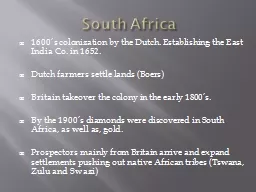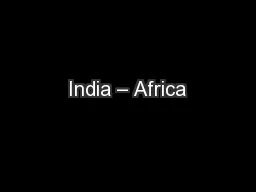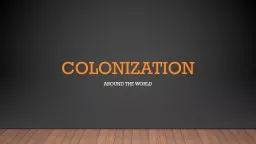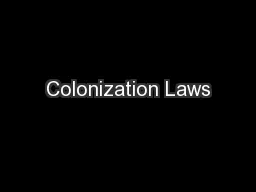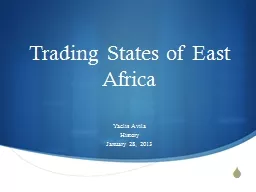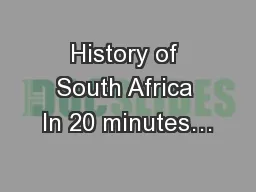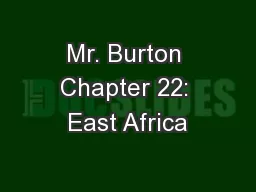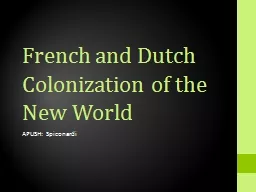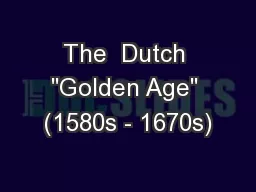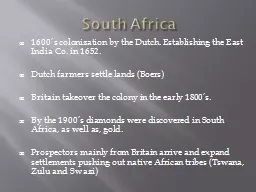PPT-South Africa 1600’s colonization by the Dutch. Establishing the East India Co. in 1652.
Author : camstarmy | Published Date : 2020-10-22
Dutch farmers settle lands Boers Britain takeover the colony in the early 1800s By the 1900s diamonds were discovered in South Africa as well as gold
Presentation Embed Code
Download Presentation
Download Presentation The PPT/PDF document "South Africa 1600’s colonization by th..." is the property of its rightful owner. Permission is granted to download and print the materials on this website for personal, non-commercial use only, and to display it on your personal computer provided you do not modify the materials and that you retain all copyright notices contained in the materials. By downloading content from our website, you accept the terms of this agreement.
South Africa 1600’s colonization by the Dutch. Establishing the East India Co. in 1652.: Transcript
Download Rules Of Document
"South Africa 1600’s colonization by the Dutch. Establishing the East India Co. in 1652."The content belongs to its owner. You may download and print it for personal use, without modification, and keep all copyright notices. By downloading, you agree to these terms.
Related Documents

